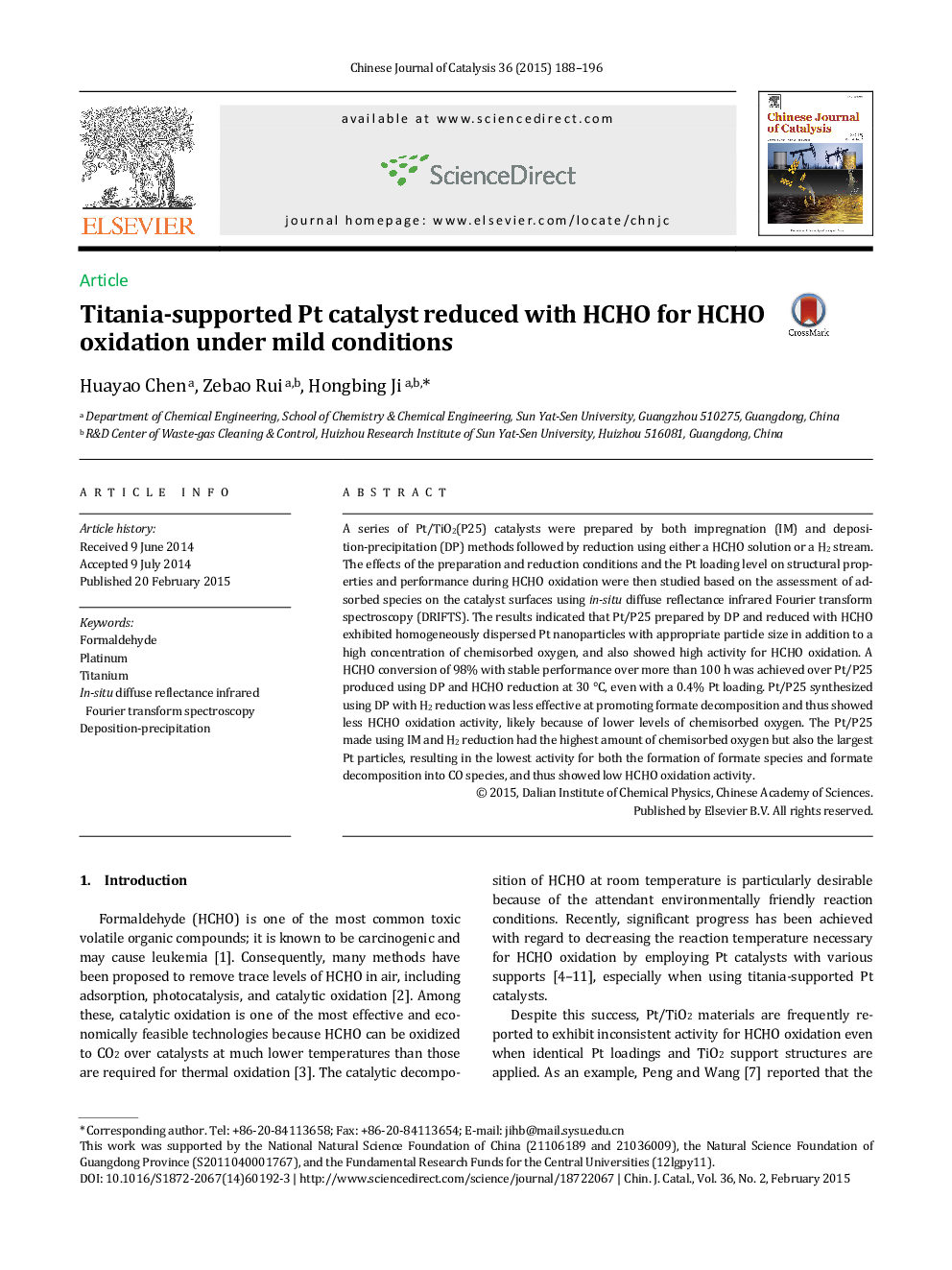| Article ID | Journal | Published Year | Pages | File Type |
|---|---|---|---|---|
| 59263 | Chinese Journal of Catalysis | 2015 | 9 Pages |
A series of Pt/TiO2(P25) catalysts were prepared by both impregnation (IM) and deposition-precipitation (DP) methods followed by reduction using either a HCHO solution or a H2 stream. The effects of the preparation and reduction conditions and the Pt loading level on structural properties and performance during HCHO oxidation were then studied based on the assessment of adsorbed species on the catalyst surfaces using in-situ diffuse reflectance infrared Fourier transform spectroscopy (DRIFTS). The results indicated that Pt/P25 prepared by DP and reduced with HCHO exhibited homogeneously dispersed Pt nanoparticles with appropriate particle size in addition to a high concentration of chemisorbed oxygen, and also showed high activity for HCHO oxidation. A HCHO conversion of 98% with stable performance over more than 100 h was achieved over Pt/P25 produced using DP and HCHO reduction at 30 °C, even with a 0.4% Pt loading. Pt/P25 synthesized using DP with H2 reduction was less effective at promoting formate decomposition and thus showed less HCHO oxidation activity, likely because of lower levels of chemisorbed oxygen. The Pt/P25 made using IM and H2 reduction had the highest amount of chemisorbed oxygen but also the largest Pt particles, resulting in the lowest activity for both the formation of formate species and formate decomposition into CO species, and thus showed low HCHO oxidation activity.
Graphical AbstractA Pt/TiO2(P25) catalyst was prepared by deposition-precipitation (DP) and reduction with HCHO. The catalyst exhibited homogenously dispersed, appropriately sized Pt particles and a high concentration of chemisorbed oxygen and showed high activity for HCHO oxidation.Figure optionsDownload full-size imageDownload as PowerPoint slide
